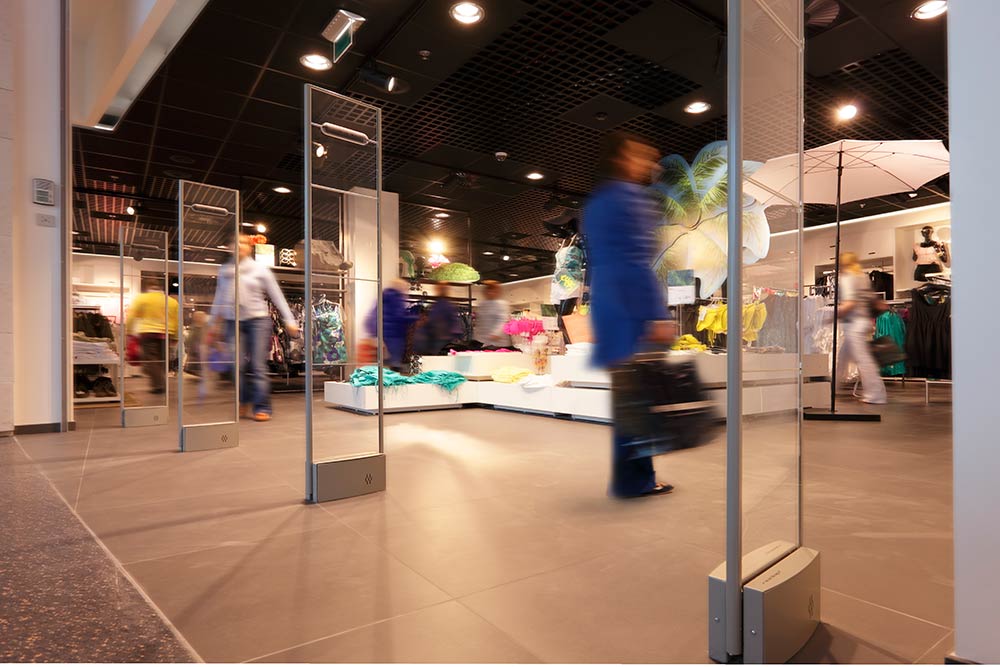Top strategies to reduce retail shrinkage

Retail has always been a game of numbers – traffic to sales, markup percentage, and profit against loss. But a startling number is that this year globally more than US$123 billion worth of sales income will simply disappear into the black hole of retail shrink.
The Global Theft Barometer notes it will walk out the door in the hands of shoplifters, line employee’s pockets, or simply vanish somewhere along the supply chain courtesy of fraud or error.
In this series we explore the prime strategies used to combat retail shrink, and profile how they can arm retail stores in the ongoing war against theft.
Part 3
Radio Frequency Identification (RFID) – Tagged and tracked
Radio Frequency Identification is a buzz term at present but the reality is it’s nothing new. The technology had its genesis in WWII when it was used to identify aircraft. Since then it has been applied across industries, including the transport sector, manufacturing arena, and now more than ever in retail.
It’s the technology you use as you pass through motorway toll gates, swipe your way into buildings, present your passport, and microchip your pet.
But it’s been a long and at times bumpy road to adoption in the retail realm. In their Digital Pulse Magazine PricewaterhouseCoopers Consulting (PwC) notes RFID has been touted as the “next big thing” in the retail industry since the mid-2000s but the previous cost of implementation and price of individual tags proved prohibitive.
That was until now…RFID Talk Blog explains the past few years have seen a strong resurgence of activity on the retail RFID front, partly due to innovation, but mainly because of reduced cost.
They note 2016 saw the apparel sector leading the RFID charge in the retail race, with approximately 4.6 billion clothing items carrying RFID tags.
“Cosmetics, electronics and alcohol also began to see heavier tag usage, as well as automotive supplies, sporting goods and small appliances. Cosmetics and jewellery represent a burgeoning market, as tag innovation overcomes prior tagging obstacles around metals and small form factors”.
And the market is likely to boom further in the immediate term.
IDTechEx figures indicate the 4.6 billion tags used last year represent only about 10 percent of the entire apparel market, leaving huge room for growth.
Meanwhile Bill Hardgrave, worldwide RFID expert and Dean of the Harbert College of Business at Auburn University told Retail Talk Blog: “The action we have seen over the last 24 months, which has been very healthy, is only going to accelerate. Adoption is going to continue and source tagging is a big driver.”
So how does RFID work and why the renewed interest?
How it works
RFID works on the basis of a microchip, usually embedded into a tag. Like a barcode these chips can store data like product identification, manufacturing date, and price information. Its benefits are that RFID chips can store that and lots, lots more. They can send and receive information wirelessly to antennae, meaning they can be read and scanned at greater distances, while their location can also be tracked.
Supply chain transparency
For the retailer this offers some serious benefits. Tags applied at the source can be tracked throughout the supply chain and right through to the shop front, allowing for greater inventory accuracy.
Importantly it assists in curtailing product loss beyond the showroom floor. And this, according to the Global Retail Theft Barometer, accounts for up to 62% of retail shrink.
In their 2015 report they noted the following global causes of loss:
- Dishonest employees – 39%
- Shoplifting 38%
- Administration error – 16%
- Supplier fraud – 7%
RFID allows the retailer to know exactly where their products are in real time. That can be right from the point of production if RFID is used as source tagging or the moment it enters a store courtesy of EAS tags.
In store labour and accounting
But it’s not just shrink reduction driving the RFID train. Increasingly retailers are utilising RFID to enhance the consumer experience, speed up the checkout and save on staff labour costs. You can learn more about how RFID is revolutionising the consumer experience here, however here are some quick accounting numbers worthy of momentary pause:
- Bill Hardgrave explains: “RFID increases inventory accuracy, from an average of 65 percent to more than 95 percent. And high inventory accuracy can lead to increased sales…”
- Informs Inc notes: “Both apparel and footwear retailers utilizing RFID in their stores have reported inventory labor reductions of 75 to 92 percent. In tests prior to the introduction of RFID technology, only 200 items per hour were counted using a manual process. Following the introduction of RFID technology, 5,000 items per hour were counted.”
Increased affordability
Critically RFID is a simple and now affordable technology to implement. If tags are not applied at the point of product production, they can easily be attached once stock reaches the store, and RFID can be added to existing AM or RF EAS systems.
Options like Vitag’s RFID solution can convert a typical apparel store to RFID. It can then automate inventory counts with an accuracy of 99.5%. Further smart store applications include automatic re-ordering, smart fitting room integration and self checkout.
The final word
RFID may have had a few false starts on the retail front, but the early falters have resulted in further innovation, increased affordability and new methods of gaining more benefits from these nifty little chips.
Already RFID is rolling out at major retailers like Macy’s who are set to have 100% RFID implementation by the end of this year offering loss prevention, item location, inventory accuracy and reduced labour costs, with the added benefit of providing a better consumer experience.